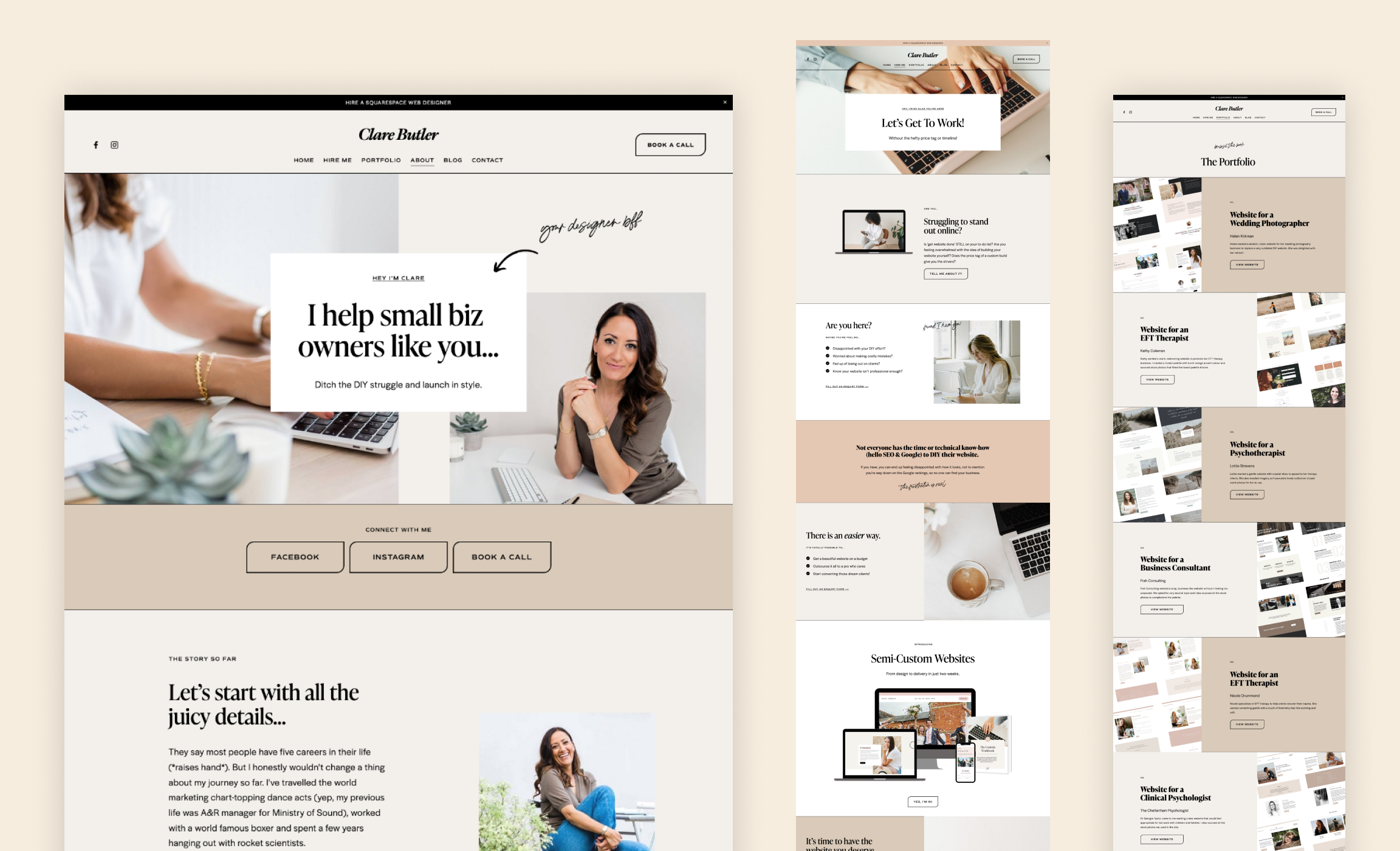Website Designers Jacksonville Fl: Efficient Web Development Improves Online Existence
User User Interface (UI) and User Experience (UX) Style: The Heart of Site Design
Ever arrived at a website that felt like browsing a labyrinth blindfolded? That's a UI/UX design failure. Site design isn't almost looks; it has to do with crafting an user-friendly and pleasurable journey for your visitors.
What's the Difference, Anyhow?
UI and UX are often used interchangeably, however they stand out. Think about it by doing this: UI is the saddle, stirrups, and reins of a horse-- the tangible aspects. UX is the feeling of riding that horse-- the general experience. A stunning saddle (UI) won't matter if the horse tosses you off (poor UX)
Crucial element of a Terrific UI
- User-friendly Navigation: Can users easily discover what they're looking for? A clear menu structure is critical.
- Visual Hierarchy: What should users see? Usage size, color, and placement to direct their eyes.
- Ease of access: Is your website functional for everybody, including those with disabilities? Consider color contrast, alt text for images, and keyboard navigation.
- Consistency: Maintain a consistent look throughout your website. This builds trust and lowers confusion.

Crafting a Compelling UX
User experience style is everything about understanding your audience. What are their goals? What are their pain points? What thrills them? It's about compassion, research, and iterative enhancement.
UX Finest Practices:
- User Research Study: Conduct surveys, interviews, and functionality testing to understand your target market.
- Personas: Produce imaginary representations of your perfect users to guide your design decisions.
- Details Architecture: Organize your content in a sensible and instinctive way.
- Use Screening: Observe users interacting with your website to identify areas for improvement.
The ROI of Good UI/UX
Buying UI/UX design isn't almost making your site look pretty. It has to do with driving conversions, increasing consumer complete satisfaction, and building brand commitment. A properly designed website can be an effective tool for achieving your organization goals. Bear in mind that time when Apple revamped their site? Sales skyrocketed, and the rest is history. Can you picture what a difference it could produce you?
Prevent Typical Risks
Slow filling times, messy designs, and complicated navigation are UX killers. Do not let these mistakes undermine your website's success. Focus on speed, simplicity, and clearness.
Eventually, great UI/UX style has to do with producing a website that is both lovely and functional. It's about putting the user first and understanding their requirements. When you get it right, the rewards are well worth the effort.
Information Architecture: The Plan of Your Website
Ever felt absolutely lost navigating a site, clicking aimlessly intending to stumble upon that evasive piece of details? That's a failure of information architecture (IA). Consider IA as the structural skeleton of your site, the undetectable structure that dictates how content is organized and identified. It's not just about aesthetics; it's about usability, guaranteeing visitors can effortlessly discover what they require. Why is this crucial? Since a confused visitor is a lost customer. And a lost customer is bad for business.
Crafting a Smooth Navigation Experience
Navigation style is the user interface manifestation of your IA. It's the menus, breadcrumbs, and search bars that direct users through your site. A properly designed navigation system need to be intuitive, predictable, and effective. Consider this: the less clicks it takes for a user to discover what they're searching for, the better. What takes place when your site grows, accumulating pages and material like dust bunnies under the sofa?
Common Troubles and Expert Solutions
Among the biggest obstacles in IA is managing intricacy as your website expands. All of a sudden, your carefully prepared structure seems like a tangled mess of spaghetti. This often leads to "click tiredness," where users abandon their search due to aggravation. How do you prevent this? An essential technique is routine material audits. Ruthlessly prune out-of-date or unimportant material. Combine comparable pages. Re-evaluate your labeling system. Think about how users really look for details, not simply how you believe they browse.
- Card Sorting: A user-centered design technique where participants arrange topics into categories that make good sense to them. This exposes valuable insights into how your target audience views and classifies info.
- Tree Screening: Examines the findability of topics within your website's hierarchy. Individuals are offered jobs and asked to browse the existing (or proposed) structure to locate the answers.
- User Streams: Mapping out the steps a user takes to finish a specific task on your website. This assists recognize potential bottlenecks and locations for improvement in your navigation.
Another neglected aspect is mobile-first IA. What deal with a desktop does not constantly equate well to a smaller screen. Focus on important content and simplify navigation for mobile users. Think about using a hamburger menu or a bottom navigation bar for easy access to key areas.
Accept the power of internal linking. Tactically link associated content within your site. This not only enhances SEO but also encourages users to explore even more, increasing engagement and time on website. Consider your website as a network of interconnected concepts, not just a collection of isolated pages.
Let's not forget the importance of a robust search performance. A well-implemented search bar can be a lifesaver for users who can't discover what they require through standard navigation. Ensure your search function is precise, fast, and supplies pertinent outcomes. Implement functions like autocomplete and suggested searches to further enhance the user experience.
Web Material Strategy and Development: The Heart of Website Style
Ever find yourself looking at a blinking cursor, a blank page mocking your finest intents for a killer website? It's a familiar scene. A stunning design can draw visitors in, but what keeps them there? The answer, my buddy, is engaging material. It's the bedrock upon which successful sites are constructed. Consider it the soul of your digital presence.
Crafting a Material Method
Web content strategy is more than just post and product descriptions; it's a meticulously prepared roadmap assisting your audience through a thoroughly curated experience. Consider it as the designer's plan, guaranteeing that every element operates in consistency to attain your objectives.
- Define Your Audience: Who are you trying to reach? What are their requirements, desires, and goals? Knowing your audience is vital.
- Establish Clear Goals: What do you want your website to accomplish? Are you wanting to produce leads, drive sales, or construct brand name awareness?
- Conduct Keyword Research: What terms and expressions are your target market using to discover info online? Comprehending keyword research study is vital for SEO.
- Establish a Content Calendar: Plan your content production and publishing schedule ahead of time. Consistency is crucial.
The Art of Web Content Development
It's time to roll up your sleeves and begin composing. However not simply any writing. We're speaking about content that captivates, notifies, and motivates action.
Here's the rub: Producing genuinely engaging web material isn't always simple. The common risk? A detach in between the intended message and how it's actually gotten. It's like trying to fit a square peg into a round hole. The option? Compassion. Enter your audience's shoes. What are their doubts? What details do they require to decide? Address these concerns head-on, and you'll be well on your way to creating content that resonates.
Remember, sites aren't sales brochures; they're vibrant, interactive platforms. Usage visuals, videos, and interactive components to keep your audience engaged. Break up large blocks of text with headings, subheadings, and bullet points. Make your material scannable and simple to digest.
SEO Considerations: Making Your Content Discoverable
Developing fantastic content is just half the fight. You also require to make certain that people can find it. That's where SEO is available in.
- Use appropriate keywords throughout your content.
- Enhance your title tags and meta descriptions.
- Build high-quality backlinks from other websites.
- Ensure your site is mobile-friendly.
Here's a pro suggestion: Don't simply stuff keywords into your material. Concentrate on creating valuable, helpful content that people actually wish to read. Search engines are getting smarter, and they're gratifying websites that prioritize user experience.
The Ever-Evolving Landscape
Web material technique and production is an ongoing process, not a one-time occasion. The digital landscape is constantly developing, so it is essential to remain updated on the newest trends and best practices. Frequently analyze your website's efficiency and make modifications to your content strategy as required.
Visual Design and Branding Elements
A website's visual style is more than simply window dressing; it's the digital handshake that forms an impression. It has to do with crafting an experience that resonates with your audience, weaving your brand name's DNA into every pixel. Think about it as visual storytelling. What story are you informing? Is it among trust and dependability, or innovation and enjoyment? The branding components you use are the ink and paper of this story.
Color Psychology: More Than Just Pretty Hues
Ever question why so lots of banks utilize blue? Color evokes feeling. It's not just about looks; it's about psychology. Red can yell urgency, while green whispers development and consistency. Consider your target group. What colors resonate with them? What sensations do you wish to stimulate? Don't simply select a color you like; choose a color that works.
One common bad move I see is ignoring accessibility. Is your color combination understandable for those with visual disabilities? Tools like color contrast checkers are your pals here. A visually spectacular site design is worthless if it excludes a part of your audience.
Typography: Your Brand's Voice
Typefaces aren't simply typefaces. They're voices. A spirited script can convey whimsy, while a strong sans-serif can forecast self-confidence. Are you utilizing a typeface that's understandable throughout various devices and screen sizes? A beautiful font is squandered if it's a stress to check out. And, for the love of all that is holy, restrict the number of font styles you use. A cacophony of typefaces is a visual headache.
Imagery: A Picture deserves a Thousand Clicks
Stock images have their place, however authentic images can be gold. Original photography or illustrations can set you apart. Showcasing your team, your products in action, or your special procedure includes a layer of authenticity that stock images merely can't replicate. Beware the risks! Are your images enhanced for web use? Large images can cripple your site's loading speed, sending out visitors leaving. Do your images align with your brand name's message and worths? A mismatched image can create dissonance and confuse your audience.
- Make sure images are high-quality however optimized for web usage (compressed)
- Usage alt text for all images, both for availability and SEO.
- Think about utilizing a constant design for your images (e.g., black and white, classic filter)
The Consistency Conundrum
Picture a brand name that uses check here a different logo on every page, a various color scheme on every section, and a different font on every headline. Complicated, ideal? Consistency is essential. Your brand name ought to be immediately identifiable, no matter where somebody experiences it online. Utilize a style guide to record your brand name's visual aspects and make sure that everyone on your group is on the same page. It's a small investment that pays dividends in brand recognition and trust.
One aspect often overlooked is the favicon. It's the small icon in the internet browser tab. A properly designed favicon enhances your brand name identity and makes your website simpler to find among a sea of open tabs. It's the little details that make a big impact.
 Alfonso Ribeiro Then & Now!
Alfonso Ribeiro Then & Now! Molly Ringwald Then & Now!
Molly Ringwald Then & Now! Heath Ledger Then & Now!
Heath Ledger Then & Now! Danielle Fishel Then & Now!
Danielle Fishel Then & Now! James Van Der Beek Then & Now!
James Van Der Beek Then & Now!